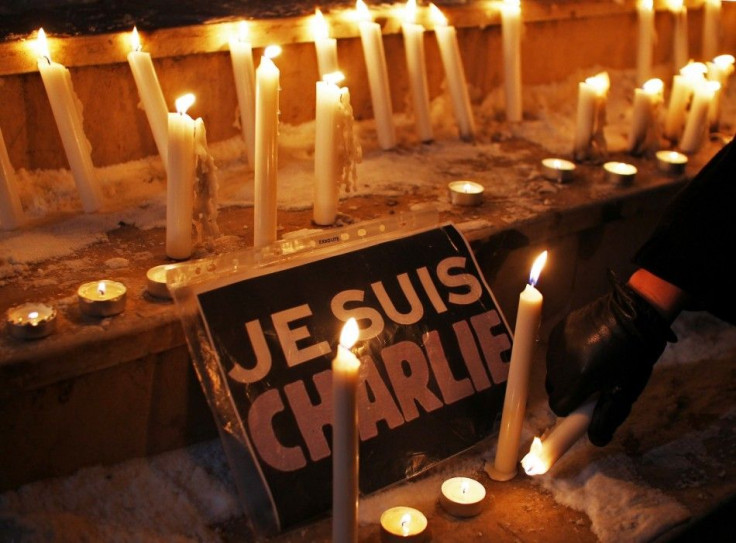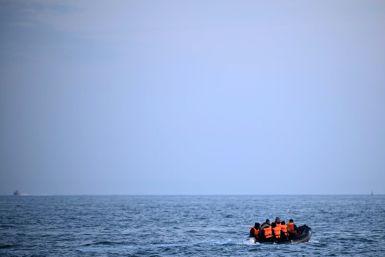Charlie Hebdo Paris Massacre: Remembering Four Celebrated Cartoonists And Their Controversial Works

On Jan 7, 2015, three gunmen stormed Charlie Hebdo's office and opened fire on France's celebrated cartoonists: Cabu, Charb, Wolinksi and Tignous. These cartoonists were among the 12 killed in the attack. Charlie Hebdo has a long history of provocative satire and the four, best-known cartoonists were known for their controversial cartoons, especially for lampooning established religions, especially Islam. Several publications have released the profiles and contributions of the four cartoonists who were killed in the attack.
Cabu
The cartoonist Jean Cabut was known by his pen name Cabut. He got himself on the hit list of Muslim fundamentalists for depicting images of Prophet Mohammed. The 76-years-old had to face a court case in 2007 because of that. Filmmaker Jean-Luc Godard called him "the best journalist in France" because of his thought-provoking works, according to Telegraph's obituary.
In its Feb 8, 2006 issue, Charlie Hebdo republished 12 controversial drawings that were published in the Danish newspaper Jyllands-Posten. In this issue's cover page, Charlie Hebdo published an original work by Cabu, showing a sobbing Mohammed who has his head in his hands. The caption reads, "Mohammed overwhelmed by fundamentalists." Underneath the caption is the controversial phrase, "it's hard to be loved by idiots." The editor then, Philippe Val was sued.
While Val was acquitted, and the case was considered a hallmark for the fight on free speech, it made Charlie Hebdo a potential target on the eyes of Muslim radicals. The company received threatening calls ever since. After a spoof feature with "Prophet Mohammed" as the "guest-editor," the offices of Charlie Hebdo were firebomed on Nov. 2011.
After the killing on Jan. 7, the witnesses claimed that the perpetrators were shouting "we have avenged the Prophet Mohammed."
Charb
According to New York Times, cartoonist Charb, real name Stéphane Charbonnier, made provocation his bread and butter. Mr Charbonnier, 47, was the editorial director of Charlie Hebdo. He had a regular slot in the publication: "Charb n'aime pas les gens" ("Charb doesn't like people"). His favourite pose during photoshoots was holding his fist aloft.
The cartoonist had been instrumental in various defiant campaigns that often led to a split in public opinion. Some viewed his works as thoughtless provocations while some thought them genius -- powerful stands in favour of speech. He was the one who oversaw the spoof issue of Charlie Hebdo featuring Prophet Mohammed as a "guest-editor." Suffice to say, he was also instrumental in triggering radical Muslims' firebombing of the publication's offices in Nov. 2011.
In 2012, the cartoonist did not listen to the advice of the French government and went ahead with the publication of Mohammed in crude poses. Mohammed was even featured naked. Under the Islamic law, this crossed a line. This work pushed Laurent Fabius, then a foreign minister, to ask if it is sensible or intelligent to pour more oil to the fire. French schools, embassies, consulates and cultural centres around 20 countries have to be closed because of this. Daniel Leconte, however, who made a documentary about Charlie Hebdo and its constant provoking pieces against radical Muslims said Mr. Charbonnier did not see what the fuss is all about. For him, everyone should have the right to express whatever they wish and think.
Mr. Charbonnier was all about free speech, not really picking a side between Muslims and Christianity. When then French prime minister Jean Marc Ayrault blocked protests prepared by Muslims in 2012, Charb even defended them and said they should be given the chance to protest, as they have the right to express themselves as everyone else.
Mr. Charbonnier, who was on a list of Al Qaeda's targets, had police protection when the offices of Charlie Hebdo was gunned down. However, it could be remembered that he old French daily Le Monde that as a single man, he was not worried about being retaliated against. His phrase of wanting to rather "die standing than live on my knees" caught the attention of many. It is currently being used in many inspirational memes after the Paris shooting occurred.
Mr. Charbonnier's most recent cartoon, shared Wednesday on social media, appeared scarily prophetic. It featured a hapless-looking man adorned in the style of usual Islamic extremists. It had a caption of "still no attacks in France." The extremist, in a speech bubble, pointed out that he could still wait until the end of January to present his New Year's wishes.
Tignous
Tignous, 57 or Bernard Verlhac in real life, had been a cartoonist for the press since 1980. He was a member of the network of cartoonists called "Cartooning for Peace." His cartoons could be seen on the site. Most of his early works could be found in L'idiot international, La grosse Bertha, and L'événement du jeudi, according to his bio on Cartooning for Peace.
Tignous was also contributing consistently to the weekly news magazine Marianne and the monthly Fluide Glacial as well as Charlie Hebdo. His more popular published works included "Pandas in the Mist" and "Five Years of Sarkozy."
In 2008, the cartoonist took part at the Cannes Film Festival alongside Wolinski and Cabu for the documentary "C'est dur d'être aimé par des cons," which can be translated into "It's Hard Being Loved by Jerks." The documentary revolved around the death threats being received by Charlie Hebdo.
Wolinski
Georges Wolinski, was 80-years-old when the radical Muslims decided to gun down Charlie Hebdo and killed him along with his fellow celebrated cartoonists. The Jewish cartoonist contributed to Paris Match, Le Nouvel Observateur and Paris-Presse, and then Charlie Hebdo among others. He was also the editor-in-chief of the monthly magazine Charlie Mensuel.
The son of a Tunisian Jewish mother and a Polish Jewish father, Wolinski is one of the renowned caricaturists in France. He became the subject of a 2012 book. He started his stint as a cartoonist in 1960 as he looked for an alternative to his university architectural studies.
After his tragic death under the hands of the gunmen, his daughter posted a short but heartwrenching post about the cartoonist and his legacy. In a photo and just five short words, Elsa Wolinski summed up what her father's death means. "Papa est parti pas Wolinski," read the post, which can be translated into "Papa has left (is gone), not Wolinski." The photo featured Georges Wolinski's study, his drawing board on his desk with a pencil on a white page. This Instagram post showed that the cartoonists are more than just national icons, they were family men too who went out their way to stand up for what is right.
Aside from the four cartoonists, 8 other Charlie Hebdo people were killed in the ambush. British Prime Minister David Cameron had since tweeted: "The murders in Paris are sickening. We stand with the French people in the fight against terror and defending the freedom of the press." World's cartoonists respond to the deaths of their fellow cartoonists through their social media, majority of which used the hashtag #jesuischarlie or "I am Charlie."
a.dee@ibtimes.com.au






